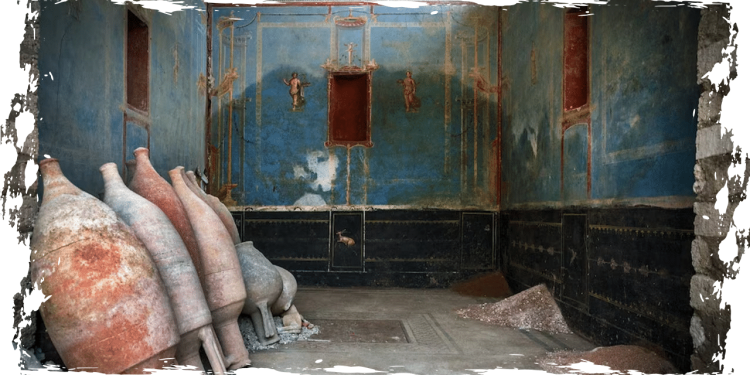It’s been thousands of years since Mount Vesuvius erupted, destroying the Roman city of Pompeii, but the ancient archaeological site still yields new discoveries.
Archaeologists recently uncovered an exquisite “blue room,” marked by images of feminine figures on the cerulean-painted walls, according to a press statement from the Archaeological Parks of Pompeii issued earlier this month.
The almost 90-square-foot room was discovered during the Bourbon period (1813–1840), but it was just recently excavated and presented for the first time on May 27.
Experts believe that these murals depict the four seasons, or “Horea.” Other murals include agricultural symbols, such as a plow and a “pedum,” a short staff used by shepherds and hunters, according to the statement.
According to scholars, the pigment in the room is very important, as “the color blue found in this room rarely occurs in Pompeian frescoes and was generally used for elaborately decorated rooms.”
Experts have interpreted the unusual blue room as a sacrarium, or a Roman sanctuary “devoted to ritual activities and the storage of sacred objects.”
Objects unearthed in the room include 15 transport amphorae, or big vessels, as well as a set of bronze jugs and lamps.
Archaeologists also dug mounds of building materials ready for use in the renovation operation. They also discovered a stack of empty oyster shells.
According to the statement, the blue chamber excavation is part of a bigger mission to “safeguard the vast heritage” of Pompeii, which contains 13,000 rooms in 1070 dwelling units, as well as public and sacred sites.
In 2018, the Carabinieri of the Cultural Heritage Protection Center and the Pompeii archaeological superintendence made a find in a large villa just beyond the walls of Pompeii, far from the known archaeological area.
Archaeologists researching the site discovered houses with large balconies painted Pompeian red and adorned with geometric floral and animal designs. They called it the ‘Vicolo dei Balconi’ (Alley of Balconies).










